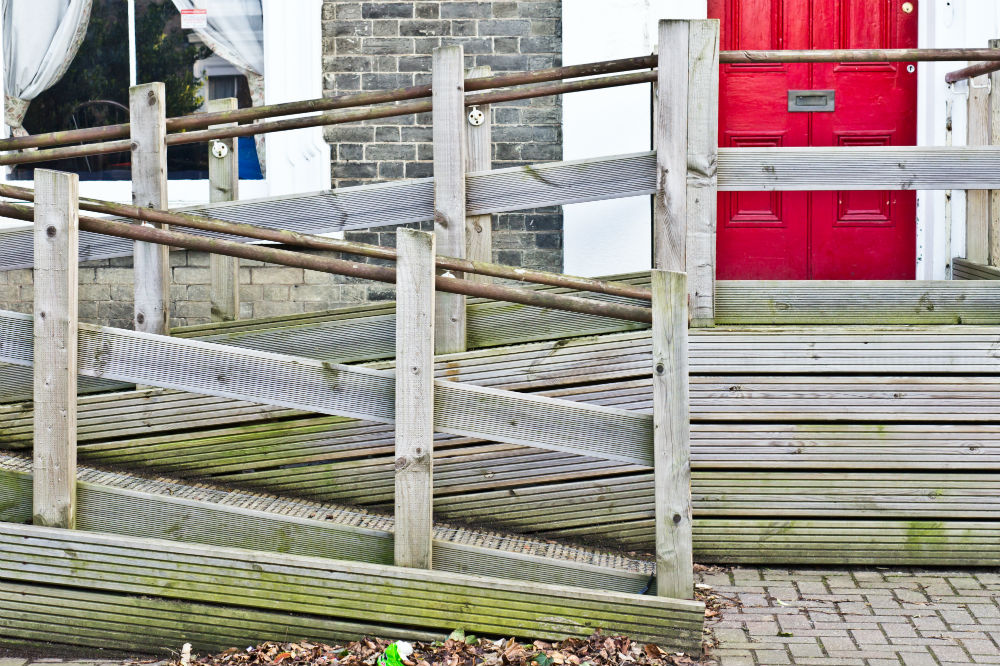Designing Safe Spaces For Neuropathy Sufferers
Is your home a safe space? For your feet—and for you?
If you suffer the effects of peripheral neuropathy, it’s important that you can answer that question with a resounding, “Yes!”
Why?
Well, if you do have neuropathy (or know a loved one who does), you’re familiar with how it can slowly steal your mobility, stability, and security away from you.
Without proper sensation in your feet, your ability to manage your own balance and feel stable are compromised. Sometimes even muscle strength and control may be affected by neuropathy of the motor nerves. Your entire gait pattern may change to try to compensate for these deficits.
Eventually, maneuvers that used to be automatic—descending or ascending stairs, reaching for pots or pans, even getting up out of a chair—can seem perilous. And it may only take one ill-timed tumble to cause a serious injury—and, potentially, a permanent reduction in your quality of life.
Fortunately, we do have some great news to share. For many people, the effects of peripheral neuropathy can be not only managed, but often even partially reversed thanks to innovative new treatment options. It’s the best hope we have yet, and care is improving all the time.
In the meantime, however, you can significantly reduce your risk of accidental falls and injuries related to your neuropathy by making your home environment as safe as possible. Here are some tips to get you started.
Clean Up the Clutter
We get it. For many of us, finding the motivation to clean and tidy up the house isn’t always easy—even if our feet are feeling great.
Unfortunately, clutter can pose all kinds of tripping, slipping, and toe-stubbing hazards, particularly for those who are having trouble feeling their feet or finding their footing.
Some general pointers:
- Keep all walkways and common areas clear. You shouldn’t have to tiptoe around clutter just to get from point A to point B in your house.
- Minimize the use of low furniture or obstacles like magazine racks, ottomans, or coffee tables. If you do have them, once again, make sure they are out of high-traffic areas. Push dining chairs back under tables when you’re done using them.
- Keep cords and cables out of the way. Maneuver them under furniture or under cord covers along the perimeter of the walls if necessary.
Keep Everyday Items Within Reach
With neuropathy, it can be difficult enough to balance just standing and walking normally. Activities like reaching up on tiptoes to grab a glass, crouching to grab a pan, leaning in to grab something at the back of the closet, or even yanking hard on a window frame to open or close it can be much more difficult—and risky.
As much as possible, keep the items you use every day (or at least regularly) in a place where you won’t have to bend, stretch, reach, or otherwise challenge your balance in an uncontrolled environment. (You do want to challenge your balance, of course—but only by performing specific balance exercises in a safe and controlled way.)
Of course, not everyone is equally blessed in the height department, so this is often even more of a challenge for shorter individuals. No matter how tall you are (or aren’t), consider picking up a reacher / grabber tool for help grabbing tough-to-reach objects. They’re usually inexpensive, and very helpful.
Conquer the Stairs
For some people with peripheral neuropathy, going up or down stairs can especially challenging. Difficulty maintaining balance control can lead to more swaying from side to side, more instability, and ultimately more falls.
There are several ways to begin tackling this problem.
- Take fewer trips. The logic here is pretty straightforward: the less frequently you have to go up and down, the fewer opportunities you have to fall. For example, you might consider moving your bedroom, bathroom care supplies, laundry facilities, etc. to the main floor if possible.
- Install sturdy handrails—and use them. Every staircase in your home should be equipped with sturdy guardrails capable of supporting your full weight, all the way from bottom to top.
- Install a chair lift. This is a more expensive option, but may be helpful for individuals with severely limited mobility.
- Build exterior ramps. If there’s no way into your home without climbing a set of stairs, consider installing an easily accessible ramp to at least one main entrance.
Make the Bathroom Safer
Bathrooms can be tricky to navigate with neuropathy. Challenges here include slick floors and tubs, water temperatures, and having to get up and down from the toilet seat.
Some simple adjustments you can make to improve safety include:
- Installing grab bars. These can help you balance and support yourself in the shower or when getting up and down from the toilet.
- Raised toilet seat. This can be especially helpful if you have knee trouble or any problems getting up and down from a seated position.
- Nonskid bath mats. Get a large one that covers most of the floor.
- Avoid hot water. If your nerves have dulled, you may not be able to tell when the water in your tub or shower is scalding-level hot. You may need to test with your elbow or get a bath thermometer—or even install a temperature-controlled faucet.
Get Your Home Evaluated by a Professional
With perhaps a few exceptions, all the items above are fairly common-sense approaches that can be valuable for people with neuropathy as well as seniors with mobility issues generally.
However, every individual is unique—different physical condition, different home setup, different lifestyle goals, etc.
An occupational therapist is a trained medical professional who specializes in (among other things) providing home assessments and making recommendations for how to make environments safer for individuals struggling with health issues. He or she might be able to make more specific recommendations about your home. For example:
- Do door widths or entryways need to be modified?
- Should you switch to level-style door handles or offset hinges?
- Do you need a frameless walk-in shower or a shower chair?
- Do you need railings for hallways?
Get Your Feet Evaluated by a Professional (Specifically, Us)
Back at the very beginning of this blog, we mentioned that treatment for neuropathy has come a very long way indeed.
We are seeing amazing results with patients who are making huge gains in lower limb nerve function—even being able to resume treasured activities they had given up years ago.
We use a combination of advanced techniques, include:
- Laser therapy
- Guided cortisone injections
- Radiofrequency nerve ablation
- Dellon nerve compression surgery
Keep Your Feet Safe!
If you’re losing sensitivity in your feet and you haven’t yet been in to see Dr. Shih at the Tucson Neuropathy Institute, don’t wait another day to call. You can reach our office at (520) 545-0202.
Contact Us
Office Hours:
Monday - Friday
8:00AM - 5:00PM
Tucson Foot & Ankle Institute:
7406 N. La Cholla Blvd.
Tucson, AZ 85741
Phone: (520) 545-0202
Fax: (520) 545-0201
© Tucson Foot and Ankle Institute. All Rights Reserved. | Privacy Policy



